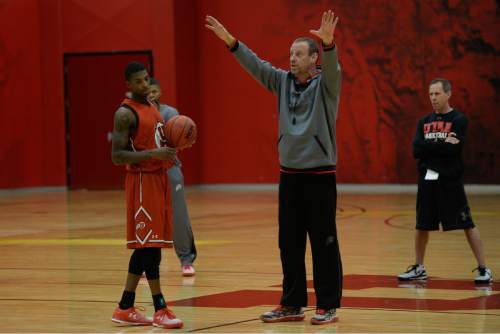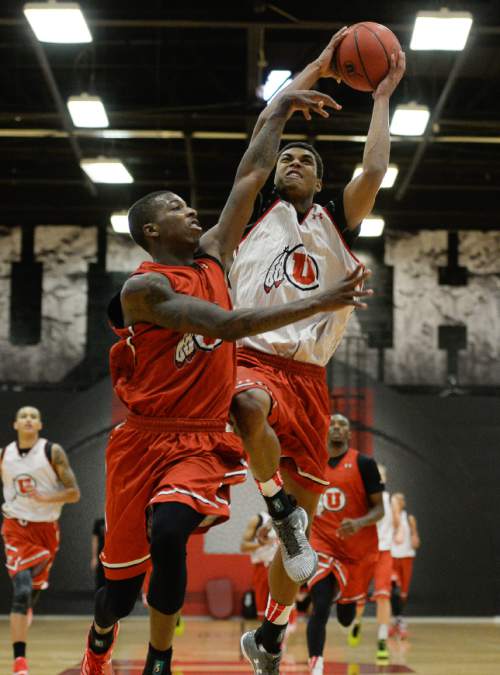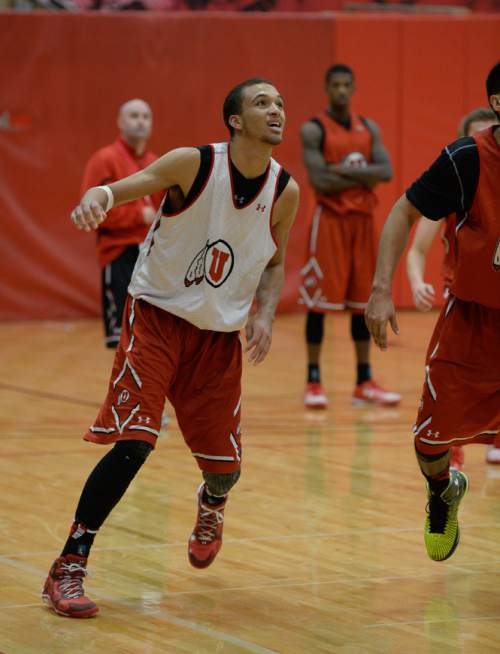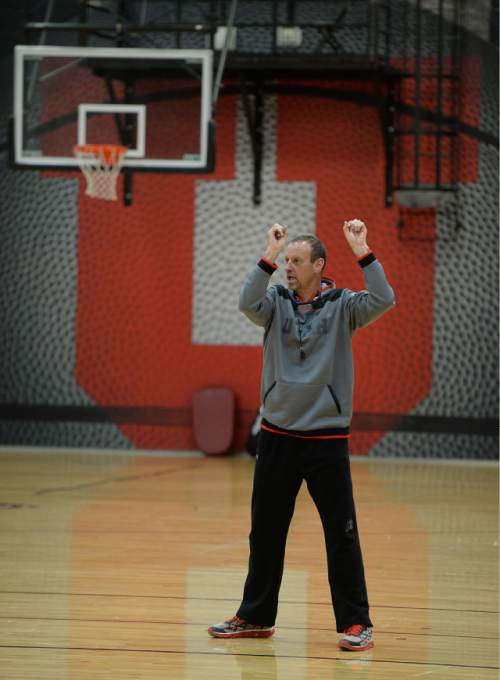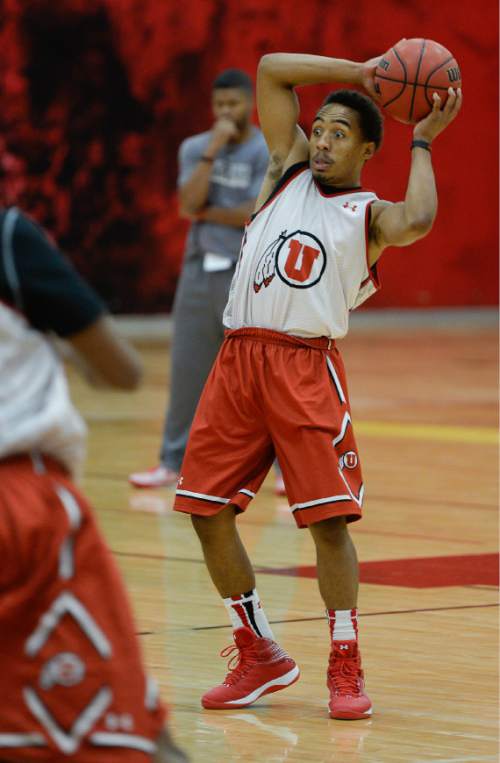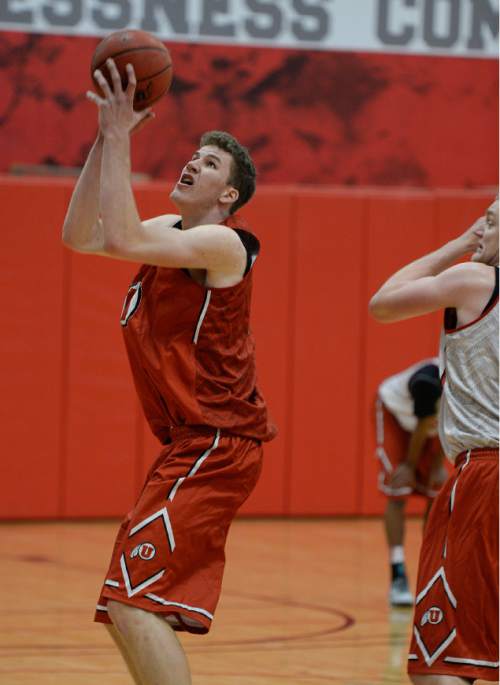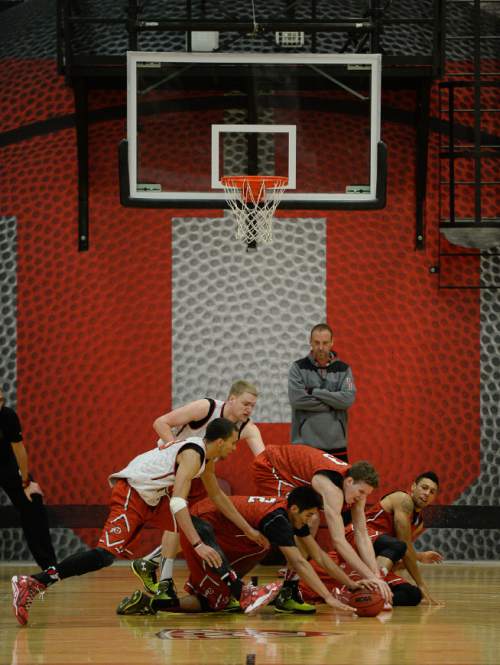This is an archived article that was published on sltrib.com in 2014, and information in the article may be outdated. It is provided only for personal research purposes and may not be reprinted.
Ranked in the preseason for the first time since 2000, the No. 25 Runnin' Utes have veteran savvy, a bumper crop of fresh faces, a newly renovated home arena and the framework of a state-of-the-art basketball facility.
It's about time, thought coaches, that the Runnin' Utes get an offensive identity.
"Three years ago, we were just throwing stuff at the wall and hoping something would stick," said associate head coach Tommy Connor.
Last year, something did: putting the ball in the hands of point guards Delon Wright and Brandon Taylor, and running set plays and pick-and-rolls. And it wasn't bad, either. Utah averaged 75.7 points per game, up from 64.2 the year prior, and shot .489 from the field, 12th in the nation.
But head coach Larry Krystkowiak felt that approach had its limits.
So in the weeks and months after Utah's first-round NIT loss to Saint Mary's, Krystkowiak and Connor conceived a motion offense that they hope to count on when their Magic Markers dry out and their voices grow hoarse — or more seriously, during the time before and after strictly defined plays.
"To be honest," Connor explained, "we're like everyone in the country: We're trying to play a little more like the Spurs."
In other words: free-flowing. Winning.
For the uninitiated, "motion" is somewhat misleading.
Without continual movement, you do not have a motion offense, but the same can be said of other schemes, like the flex offense the Utah Jazz ran under frequent Utah game attendee Jerry Sloan.
What distinguishes a motion offense is that players move without being "on railroad tracks," as Krystkowiak puts it. They judge for themselves where to go and what to do — or at least, they judge based on a set of pre-established rules, and often only until a set play kicks in.
(An object in motion stays in motion unless acted upon by a set play.)
Utah may often abandon motion when the shot clock nears 10 seconds — a point they call "butter" — but prior to that, they may run through motion variations two, three or four times in search of an open shot.
"For the most part, I just want our guys to go make plays, and I think that's the hardest thing to guard," Krystkowiak said.
This wasn't a sudden revelation: Krystkowiak has wanted to run motion for a while.
Motion has prerequisites, though. In a standard 3-2 motion, all three perimeter players have to be able to beat a sagging defender, and the two post players have to be adept at passing and setting screens.
Krystkowiak inherited little from Jim Boylen when he took the job four years ago, and now, with a full stable of recruited players, he has the personnel he needs.
"Maybe we had guys that didn't need to be guarded all the time, and so if that's the case, and you're trying to run motion, you have two guys defensively that are always going to be in the way," Krystkowiak said.
It also helps that coaches have had the entire offseason to install the offense. Free will can be tough, Connor said. It's no longer like remembering the route to Poughkeepsie.
"Sometimes it's harder to teach, because guys have to make the right reads," Connor said. "It's not as easy sometimes as 'You go here' and 'You go here.'"
But they're coming along, he said.
Wright — who dished out 5.3 assists per game last season — is excited to share some of the playmaking burden.
"If the defense makes a mistake on a screen, one of our players can attack them and make plays for other players," he said. "That helps everybody, instead of, in our old offense, depending on one person to make a play."
Another selling point for motion is that it can be exhausting to cover: Late in the shot clock, a defense isn't always excited about seeing it for the third or fourth time.
And it has paid dividends for Utah's own defense, which once had the luxury in practice of knowing the offense's plays.
"We're constantly running through screens and having to get over screens, and we just can't be lazy," Wright said. "I think it's helping us, and we'll be ready for different offenses."
The next step is for Connor and Krystkowiak to recruit with a motion offense in mind. They don't want to be reinventing themselves next spring.
Says Connor: "Now, with a little more depth, a little better player, a little more experience, we're able, I think, to come up with something that can hopefully last for years to come."
Twitter: @matthew_piper —
No. 25 Utah vs. Pacific (exhibition)
O Thursday, 8:30 p.m., Huntsman Center
TV • Pac-12 Network
Radio • 700 AM


